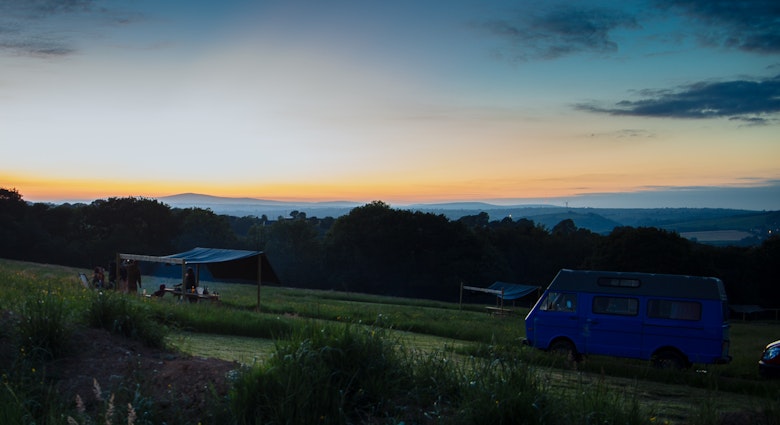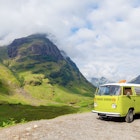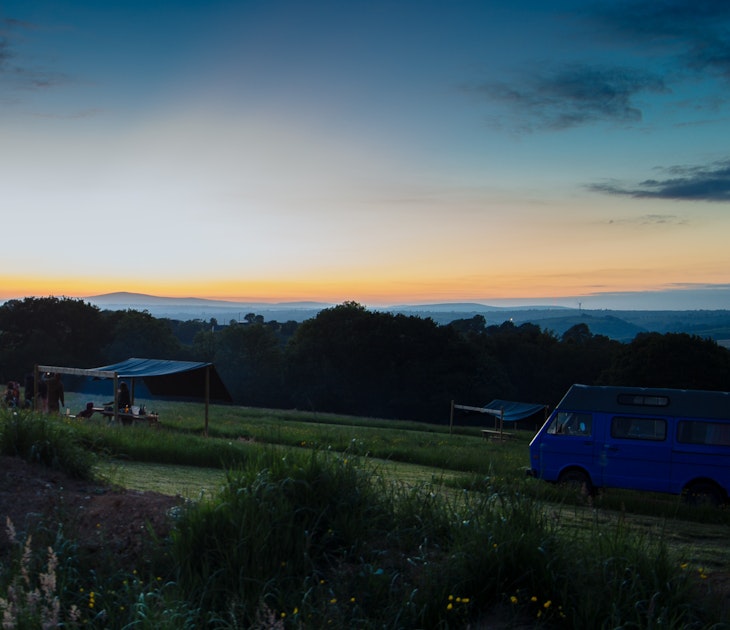
Wild camping – your ultimate guide to planning a trip

A lot can change in the wilderness, so plan your trip carefully © Getty
Waking up surrounded by natural beauty and experiencing the solitude of the countryside is what lures travelers to wild camping. As romantic as it sounds, there are still rules to follow that will ensure each adventure is safe and rewarding, while preserving such special spots for the wildlife and those who follow next.
Whether you’ve tramped and camped across New Zealand or you’re planning your first ever hike and overnight in the Scottish Highlands, the guidance remains the same. Here’s a checklist of how to prepare for wild camping.
1. Plan your trip carefully
It doesn’t matter if it’s your first trip or your 100th, planning is essential as a lot can change out in the wilderness – and it so often does. The weather can shift unexpectedly, paths become impassable, rivers swell, and other travelers might beat you to your preferred camping spot, so always set out your trip in advance.
Use a good map to plot a route within your capabilities and double-check its feasibility with the national park visitor center or a local hiking group wherever possible. Work out how long you think the trip will take – a cautious estimate here is better than a marathon goal – and pick two or three potential camping spots.

2. Camp where permitted
Also known as "free" or "freedom" camping, wild camping has subtly different meanings depending on the destination: in some countries, it means pitching in designated back-to-nature campsites with basic facilities; in others, it refers to choosing your own spot amid large tracts of wilderness.
Laws around wild camping also vary from country to country, and from state to state. In England and Wales, the rules are relatively restrictive because most land is privately owned, but there are still areas where it is permitted, mostly in national parks. Wild camping is legal in Scotland and tolerated in Ireland, following certain guidelines.
In Australia and New Zealand, free camping is common but limited to specific reserves and parts of national parks, as it is in both Canada and the USA. No matter where in the world you wish to wild camp, assume nothing. Do your research and seek advice from local information centers and national park offices.
3. Know what to pack
While part of the appeal of wild camping is escaping from civilization, this also means being totally self-sufficient. The nearest shop is likely to be miles away so you will have to carry everything you need, including sufficient food. Always take enough to last an extra night in case of emergencies.
Make a checklist. As well as the obvious items such as a waterproof tent, camp stove, cooking fuel, and appropriate outdoor clothing, pay attention to small but vital items such as a first aid kit, a torch and spare batteries, matches and insect repellent. A penknife and duct tape are handy for running repairs.

4. Beware of bad weather
Bad weather may prevent you getting to your wild campsite. Do your research beforehand by checking the local forecast, and learn to interpret the skies when you’re en route, particularly up higher passes or peaks.
An easy trail can become dangerous in the rain and snow and whiteouts present a particular risk if you’re in the mountains, where conditions can change in a matter of minutes. At the other extreme, intense heat can sap energy levels, or cause dehydration or heatstroke. Take shelter or turn back if the weather turns ugly.
5. Pitch well
Try to set up on free-draining, high ground, well away from river and stream edges. It’s also good to scour the area for anything that might damage the tent. Trees might appear perfect for providing shelter from the elements, but look for any branches that might snap off in high winds and camp well clear of them. Heed a similar warning in areas where rocks might fall.
Camp discreetly and unobtrusively, taking care to pitch away from any buildings or roads, and out the eyeline of paths and passes. Damp woodland areas can seem like a good idea, but they tend to attract midges and mosquitoes.
When you’ve picked a spot, always peg your tent in with gusto, securing the guy ropes with rocks or around a tree if the ground is too hard.

6. Source water
Water is an essential ingredient for any wild camping trip, so consider where you’ll get it and whether it will be fit to drink. Your map or route guide should indicate available sources, whether a tap at the toilets or shelter, or a natural watercourse such as a river or stream.
If you are unsure of the quality of the water, treat it. Boil it for at least three minutes, or use a filter or chemical treatment. Lightweight purification kits are available from most outdoor equipment stores.
7. Be smart with fires
Wildfires are a serious threat to dry wilderness areas and the reason why camping is prohibited in certain places. Respect all fire bans, and where campfires are allowed, obey all rules such as using pits or grates and burning only dead wood from permitted sources.
Don’t build a bonfire when a small fire will do, and make sure it is fully extinguished by dousing the embers with water or covering them with sand or soil. Check the ashes are cold before moving on.

8. Watch out for wildlife
Wildlife encounters can be a highlight of any camping trip, but some are more welcome than others. Find out about resident fauna and what risks it may pose. Obey all rules regarding interaction with animals, which will include keeping your distance, securing your food supplies, and not feeding them no matter how cute and persistent they are. Some of the smallest critters can cause the biggest problems, such as mosquitoes, ticks and spiders. Take all necessary precautions, such as immunisations where recommended.
9. Be ready for an emergency
Never set off without letting someone know your plans and your estimated time of return; if something goes wrong, they can raise the alarm. Before you leave, ensure your first aid kit is up-to-date. For short trips, take plasters and painkillers at a minimum; for longer hikes, consider bandages, sterile pads, antiseptic, and rehydration powders. Try to find room for a survival bag or emergency blanket, and a whistle is useful should you need to attract attention. Major hiking hubs will also rent out personal locator beacons (PLB), safety devices that send an alert to rescue services if you run into serious trouble.

10. Leave only footprints
There’s a reason why national parks and reserves throughout the world provide back-to-nature campsites for adventurers – they allow you to enjoy the natural landscape while managing your environmental impact.
When you pitch in undesignated wilderness sites, you and you alone are responsible for leaving the place as you found it. Bury human waste at least six inches deep and 200ft from the nearest water source, taking any toilet paper home with you (ziplock bags are good for this). Pack up all your rubbish, be smart with any fires, and leave absolutely no trace of your visit so others can enjoy it just as much.
You might also like:
Great British campsites for social distancing this summer
What to expect when camping in Europe this summer
Is glamping going to be the new social distancing travel trend?
Article first published in January 2015, and last updated by Daniel Fahey in July 2020
Explore related stories



 CyclingHow to plan a biking trip to New Zealand’s Southern Lakes and Central Otago regions
CyclingHow to plan a biking trip to New Zealand’s Southern Lakes and Central Otago regionsNov 11, 2024 • 4 min read

 Solo Travel20 expert solo travel tips for women from the Lonely Planet team
Solo Travel20 expert solo travel tips for women from the Lonely Planet teamOct 31, 2024 • 11 min read

 ActivitiesEdinburgh vs Glasgow: How to choose between Scotland's liveliest cities
ActivitiesEdinburgh vs Glasgow: How to choose between Scotland's liveliest citiesOct 30, 2024 • 9 min read
 Wildlife & NatureThe 11 best things to do in Scotland from spotting puffins to bagging peaks
Wildlife & NatureThe 11 best things to do in Scotland from spotting puffins to bagging peaksOct 15, 2024 • 8 min read
 CyclingFrom the Highlands to the islands, here’s how to get around Scotland
CyclingFrom the Highlands to the islands, here’s how to get around ScotlandOct 15, 2024 • 9 min read
